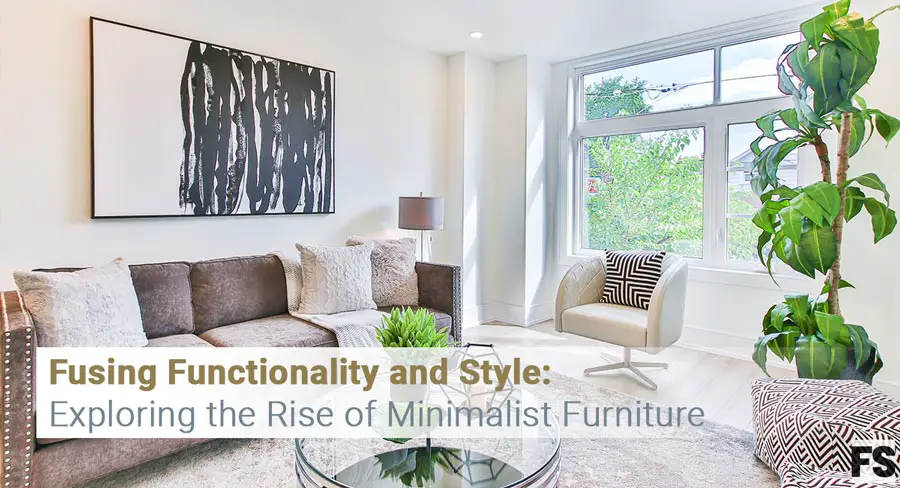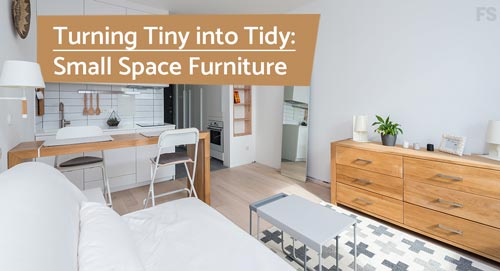Fusing Functionality and Style: Rise of Minimalist Furniture

Table of Contents
- Introduction
- The Origins of Minimalist Furniture 2.1 The Modernist Movement 2.2 Influence from Japanese Design
- Characteristics of Minimalist Furniture 3.1 Simplicity and Clean Lines 3.2 Functionality and Practicality 3.3 Use of Natural Materials
- Minimalist Furniture in Interior Design 4.1 Creating a Minimalist Bedroom 4.2 Designing a Minimalist Living Room 4.3 Incorporating Minimalism in the Kitchen
- The Appeal of Minimalist Furniture 5.1 Promoting a Clutter-Free Environment 5.2 Enhancing Emotional Well-being 5.3 Reflecting a Sustainable Lifestyle
- Conclusion
1. Introduction
In recent years, minimalist furniture has gained significant popularity among homeowners, interior designers, and furniture enthusiasts alike. The sleek and clean aesthetic, accompanied by the simplicity of its design, has made minimalist furniture a sought-after choice for those who value functionality and style. This article delves into the origins of minimalist furniture, its defining characteristics, its applications in interior design, and the reasons behind its appeal.
2. The Origins of Minimalist Furniture
The roots of minimalist furniture can be traced back to the modernist movement and the influence of Japanese design.
2.1 The Modernist Movement
The modernist movement, which emerged in the early 20th century, emphasized the idea of "less is more." Rejecting excessive ornamentation, designers started embracing minimalism in their creations. Architects like Ludwig Mies van der Rohe and Le Corbusier pioneered the use of clean lines, open spaces, and minimal decoration in their furniture designs, setting the stage for the minimalist movement.
2.2 Influence from Japanese Design
Japanese design principles, such as simplicity, functionality, and harmony with nature, greatly influenced the development of minimalist furniture. The concepts of "wabi-sabi" and "ma" (the use of negative space) have been integral to Japanese design and have seamlessly integrated into the minimalist aesthetic.
3. Characteristics of Minimalist Furniture
Minimalist furniture is recognizable by its unique set of characteristics that distinguish it from other styles.
3.1 Simplicity and Clean Lines
Minimalist furniture designs are known for their simplicity and clean lines. They often feature geometric shapes and sleek silhouettes, void of any unnecessary embellishments or details.
3.2 Functionality and Practicality
Another defining characteristic of minimalist furniture is its focus on functionality and practicality. Each piece is designed with a purpose in mind, maximizing its usefulness while minimizing visual clutter.
3.3 Use of Natural Materials
Minimalist furniture often incorporates natural materials, such as wood, metal, or leather, to maintain a sense of organic simplicity. These materials not only offer durability but also create a warm and inviting atmosphere.
4. Minimalist Furniture in Interior Design
Due to its versatility and timeless appeal, minimalist furniture has become a staple in interior design, being incorporated into various spaces within a home.
4.1 Creating a Minimalist Bedroom
A minimalist bedroom is characterized by a clean, uncluttered look and a soothing atmosphere. Incorporating a minimalistic bed frame and storage solutions, along with neutral color palettes, can create a serene and inviting space.
4.2 Designing a Minimalist Living Room
A minimalist living room promotes openness and tranquility. Key elements include a simple yet comfortable sofa, a minimalist coffee table, and strategic lighting to enhance the space's ambiance.
4.3 Incorporating Minimalism in the Kitchen
Minimalist kitchens focus on functionality and efficiency. Utilizing clean lines, high-quality storage solutions, and reducing visual clutter can create a streamlined and organized cooking area.
5. The Appeal of Minimalist Furniture
Minimalist furniture offers several advantages that contribute to its growing appeal among people of different tastes and lifestyles.
5.1 Promoting a Clutter-Free Environment
With its emphasis on simplicity and functionality, minimalist furniture helps minimize clutter, allowing for a clean and organized living space.
5.2 Enhancing Emotional Well-being
A minimalist environment has been known to reduce stress and improve concentration. The calm and balanced atmosphere created by minimalist furniture can have a positive impact on emotional well-being.
5.3 Reflecting a Sustainable Lifestyle
Minimalism is often associated with sustainable living. Minimalist furniture made from sustainable and eco-friendly materials supports responsible consumption and contributes to environmental sustainability.
6. Conclusion
The rise of minimalist furniture has transformed the way we approach interior design. Its fusion of functionality and style, influenced by the modernist movement and Japanese design principles, has made it a popular choice for those seeking simplicity and elegance. Its versatility and timeless appeal make it a valuable addition to any home, creating spaces that are both visually appealing and practical.


